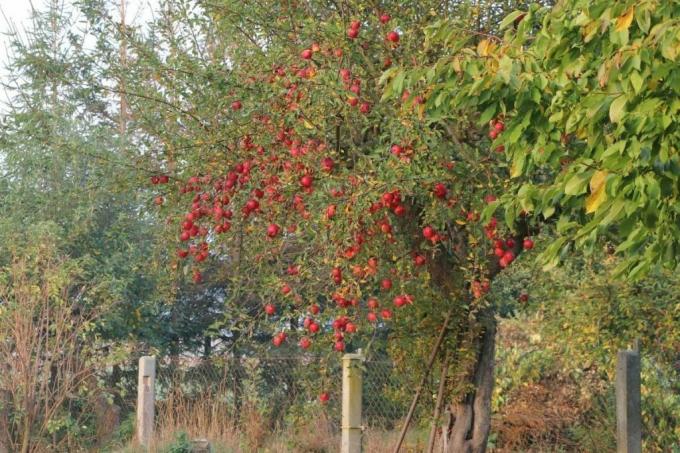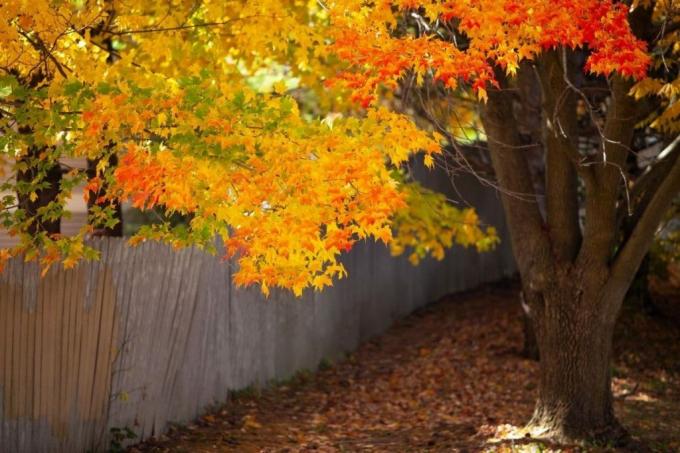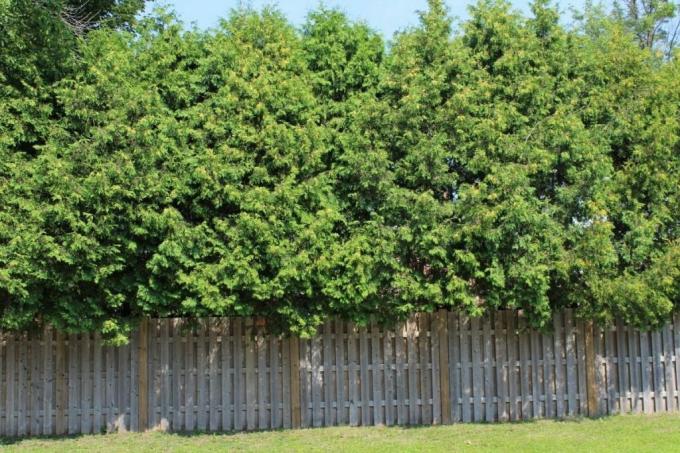
table of contents
- distances
- Regulations
- Old stock
- Replanting
- frequently asked Questions
Trees on the property line can become a problem between neighbors if proper spacing is not maintained. The most important distances and laws relating to old and new plants can be found here.
In a nutshell
- The distance between the tree and the fence should be as large as possible
- Restrictions of others should be avoided as a matter of urgency
- Laws are laid down in the BGB
- Neighbors can cut off branches that protrude above the property line
- Passers-by must not be impaired on sidewalks
distances
The distance required depends on various factors. Including:
- Tree species
- Size of the crown
- Height of the tree
- Regulations in the respective federal state and residential area
- Disturbance of the neighbors
- tree hazards

In general, when it comes to the distance, the tree does not have the Property line may protrude. Because this could, for example, annoy neighbors or passers-by. Falling leaves are not only a nuisance, but also a potential hazard.
There are also other potential problems. Including:
- breaking branches
- Windfalls
- Casting shadows
- Bird droppings
- root
Tip: You are usually on the safe side if the distance to the border corresponds to the height of the tree. An additional root barrier can also prevent damage to paths or lawn edging stones.
Regulations
In the German Civil Code (BGB), the basic regulations can be found under Sections 910 and 1004 for cutting or removing a tree if it disturbs the neighbor. Otherwise, inquire with the municipality or the respective garden area. Because how big the distance has to be depends, among other things, on the type and age of the tree and the region. A general statement can therefore not be made.
Old stock
In the case of an already existing tree population, different rules may also apply depending on the region. For example, it is possible that trees no longer have to be felled after the fifth year of standing. However, a cut may still be necessary and prescribed.

Replanting
Many problems can be avoided with replanting trees if you take the right preparatory steps to keep the correct distances from the property line. These include:
-
Inform the responsible office: Since the requirements and rules differ even within the federal states, an inquiry should be made in any case. Approval may be required.
-
Property or not? If it is not about your own property, the consent of the owner must also be obtained.
-
Measure the distance correctly: Some trees can reach enormous proportions. This doesn't just apply to the height and circumference of the crown. The roots also spread. A good guide is to use the maximum height of the tree as the distance. Even if the tree should fall over or parts of it should break off, no damage can occur.
- Insert root barrier: Shallow-rooted trees can develop a network of roots that is larger than the circumference of the canopy. Effective root barriers are therefore necessary to prevent damage to other plants, pipes and driveways or sidewalks.

Tip: Discuss with the neighbors whether a tree is desirable in your desired planting location or whether it could become a problem. Because within the first five years, the owners of adjacent properties can request a removal. Ideally, consent is given in writing.
frequently asked Questions
Yes, under certain conditions this is entirely legal. However, the neighbor must set a reasonable deadline beforehand so that you can carry out the blending yourself. He may also keep the branches and any fruits on them.
This is not necessary in every case. But to be on the safe side, find out in advance to avoid problems. Especially in gardening clubs or densely populated areas, stricter rules often apply with regard to height, type and distance.
Basically, this is necessary when it poses a danger. Very old and large trees can be rotten or break and fall during thunderstorms, storms and snow. Even uprooting is possible. However, breaking branches are more common. This can result in considerable costs.
